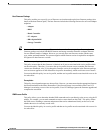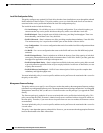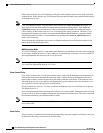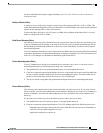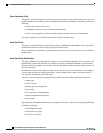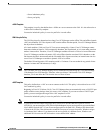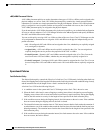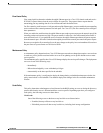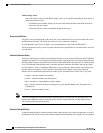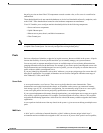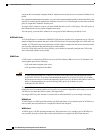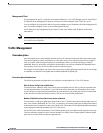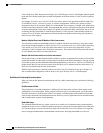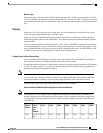
vNIC/vHBA Placement Policies
vNIC/vHBA placement policies are used to determine what types of vNICs or vHBAs can be assigned to the
physical adapters on a server. Each vNIC/vHBA placement policy contains four virtual network interface
connections (vCons) that are virtual representations of the physical adapters. When a vNIC/vHBA placement
policy is assigned to a service profile, and the service profile is associated with a server, the vCons in the
vNIC/vHBA placement policy are assigned to the physical adapters.
If you do not include a vNIC/vHBA placement policy in the service profile or you use the default configuration
for a server with two adapters, Cisco UCS Manager defaults to the All configuration and equally distributes
the vNICs and vHBAs between the adapters.
You can use this policy to assign vNICs or vHBAs to either of the two vCons. Cisco UCS Manager uses the
vCon assignment to determine how to assign the vNICs and vHBAs to the physical adapter during service
profile association.
• All—All configured vNICs and vHBAs can be assigned to the vCon, whether they are explicitly assigned
to it, unassigned, or dynamic.
• Assigned Only—vNICs and vHBAs must be explicitly assigned to the vCon. You can assign them
explicitly through the service profile or the properties of the vNIC or vHBA.
• Exclude Dynamic—Dynamic vNICs and vHBAs cannot be assigned to the vCon. The vCon can be
used for all static vNICs and vHBAs, whether they are unassigned or explicitly assigned to it.
• Exclude Unassigned—Unassigned vNICs and vHBAs cannot be assigned to the vCon. The vCon can
be used for dynamic vNICs and vHBAs and for static vNICs and vHBAs that are explicitly assigned to
it.
Operational Policies
Fault Collection Policy
The fault collection policy controls the lifecycle of a fault in a Cisco UCS domain, including when faults are
cleared, the flapping interval (the length of time between the fault being raised and the condition being cleared),
and the retention interval (the length of time a fault is retained in the system).
A fault in Cisco UCS has the following lifecycle:
1
A condition occurs in the system and Cisco UCS Manager raises a fault. This is the active state.
2
When the fault is alleviated, it enters a flapping or soaking interval that is designed to prevent flapping.
Flapping occurs when a fault is raised and cleared several times in rapid succession. During the flapping
interval, the fault retains its severity for the length of time specified in the fault collection policy.
3
If the condition reoccurs during the flapping interval, the fault returns to the active state. If the condition
does not reoccur during the flapping interval, the fault is cleared.
4
The cleared fault enters the retention interval. This interval ensures that the fault reaches the attention of
an administrator even if the condition that caused the fault has been alleviated and the fault has not been
deleted prematurely. The retention interval retains the cleared fault for the length of time specified in the
fault collection policy.
5
If the condition reoccurs during the retention interval, the fault returns to the active state. If the condition
does not reoccur, the fault is deleted.
Cisco UCS Manager GUI Configuration Guide, Release 2.0
28 OL-25712-04
Server Architecture and Connectivity




